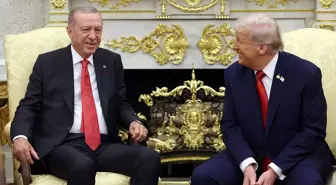A City-wide Exhibition For Everyone: 14th Istanbul Biennial

The 14th Istanbul Biennial, "Saltwater: A Theory of Thought Forms" will open to the public starting Sept. 5 in 30 venues around the city. While creating the framework of the biennial, festival "draftsperson" Carolyn Christov-Bakargiev focused on the thought and the concept of "saltwater" the Bosphorus and its currents going in opposite directions. Christov-Bakargiev also focused on the history of Istanbul and Bosphorus and how the Bosphorus was made.
The 14th Istanbul Biennial, "Saltwater: A Theory of Thought Forms" will open to the public starting Sept. 5 in 30 venues around the city.
While creating the framework of the biennial, festival "draftsperson" Carolyn Christov-Bakargiev focused on the thought and the concept of "saltwater" the Bosphorus and its currents going in opposite directions.
Christov-Bakargiev also focused on the history of Istanbul and Bosphorus and how the Bosphorus was made. It is known that the Black Sea was, in ancient times, a lake and that the Bosphorus only opened up around 2500 B.C.
The Bosphorus is a passage – and even means "cow passage" in Greek – Christov-Bakargiev said in an earlier interview with Irene Gludowacz in Parnass and CI Mag. The Bosphorus is a passage where things can crank, move or crack, she added.
In the same interview, she said she wanted to refer to all these currents under the surface of modern Turkey when choosing the works and selecting the venues.
Christov-Bakargiev is very careful about choosing words; she does not want people to call her a curator but a "draftsperson." As such, during a Sept. 2 press conference to promote the biennial, when someone asked "how she selected the venues for the biennial," Christov-Bakargiev said: "I have never used the word 'select.'" For her, it is not politically correct to use the word "select."
Christov-Bakargiev also said the first venue she decided upon was Leon Trotsky's house on Büyükada, one of Istanbul's Prince Islands. "[Turkish Nobel Laureate] Orhan Pamuk told me that Trotsky's house was on Büyükada. I did not know."
The same meticulous effort can be seen regarding the works of the biennial. The 30 venues have not been chosen coincidentally. Each venue has been chosen attentively for the works that they present.
The biennial will last until Nov. 1 in over 30 venues on the European and Asian sides of the Bosphorus, from the Black Sea to the Sea of Marmara, from Beyoğlu to Büyükada, from Rumelifeneri to the old city and from Şişli to Kadıköy.
Christov-Bakargiev said the exhibition centers on a material – saltwater – and the contrasting images of "knots and waves." According to Christov-Bakargiev, the exhibition looks where to draw the line, withdraw, draw upon and draw out.
"It does so offshore, on the flat surfaces with our fingertips, but also in the depths, underwater, before the enfolded encoding unfolds," she said, adding that the international exhibition would present new works by over 50 visual artists and other practitioners, including oceanographers and neuroscientists, in a citywide project on the Bosphorus that considers different frequencies and patterns of waves, the currents and densities of water, both visible and invisible, that poetically and politically shape and transform the world.
"With and through art, we mourn, commemorate, denounce, try to heal, and commit ourselves to the possibility of joy and vitality, leaping from form to flourishing life," she said.
Works at the biennial
The exhibition presents over 1,500 artworks, including commissions by artists as well as other materials from the history of oceanography, environmental studies, marine archaeology, Art Nouveau, neuroscience, physics, mathematics and theosophy, and some crystals that Christov-Bakargiev gathered with a friend at Robert Smithson's Spiral Jetty on Great Salt Lake in early 2015. Works at the biennial range historically from an 1870 painting of waves by Santiago Ramon y Cajal, who received a Nobel prize in 1906 for discovering the neuron, to the ground-breaking abstract Thought Forms of Annie Besant and Charles Leadbeater (1901-1905), a new work by Füsun Onur where a poem is heard on a moving boat, up to a cultural meeting point between Chicago and Istanbul by Theater Gates.
(Photo) - Istanbul







